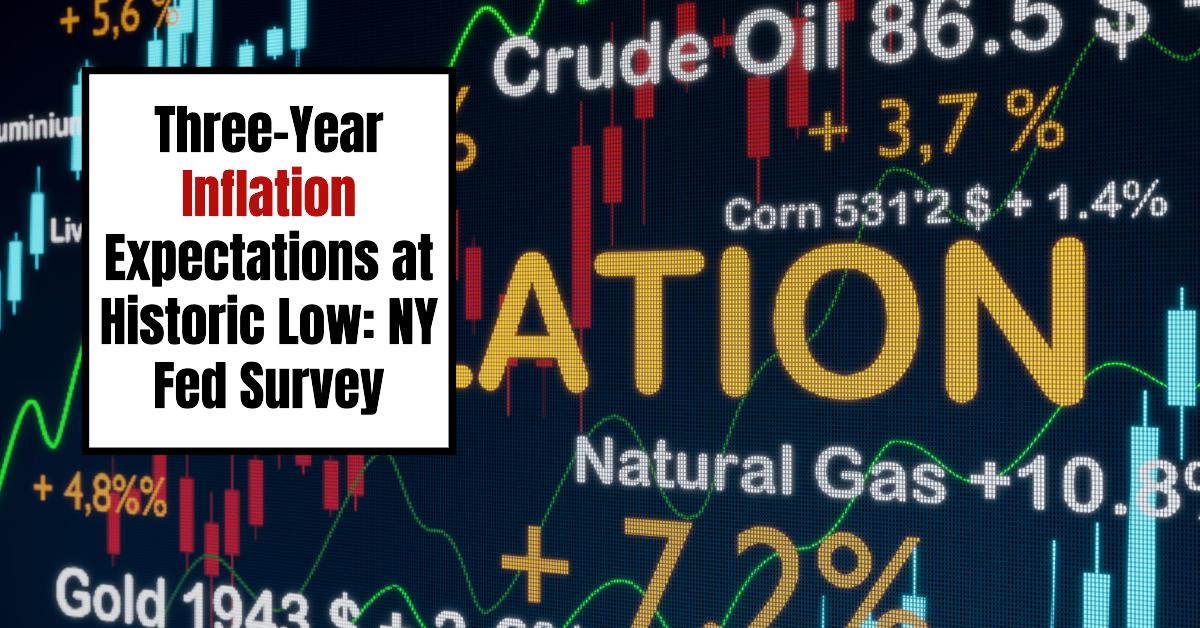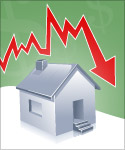In today's economy, inflation and the labor market are two sides of the same coin, significantly impacting each other in ways that define consumer behavior and overall economic health. As recent data from the Federal Reserve Bank of New York's July 2024 Survey of Consumer Expectations illustrate, recent trends in inflation expectations reveal a complex relationship with labor market conditions.
Three-Year Inflation Expectations at Historic Low: NY Fed Survey
The July 2024 Survey found that median one- and five-year-ahead inflation expectations remained stable at 3.0% and 2.8%, respectively. However, a noteworthy decline occurred in three-year-ahead inflation expectations, which fell by 0.6 percentage points to a series low of 2.3%. This decline is particularly significant among respondents with lower educational attainment and income levels, reflecting heightened economic anxieties among these demographics.
- One-year inflation expectations: 3.0%
- Five-year inflation expectations: 2.8%
- Three-year inflation expectations: 2.3% (new series low)
This stability in long-term expectations contrasts with the short-term fluctuations seen in commodity prices, where expectations for gas prices declined by 0.8 percentage points to 3.5%, while the expectation for medical care costs increased by 0.2 percentage points to 7.6%. These fluctuations show how consumer sentiment can diverge based on specific goods and services, affecting household budgeting decisions.
Labor Market Insights
The labor market's dynamics appear to be shifting, as indicated by responses in the same survey. Median expected earnings growth for the year ahead dropped by 0.3 percentage points to 2.7%, suggesting a more cautious outlook among consumers regarding wage increases. This sentiment is essential as aggregate wage growth can influence inflation indirectly through consumer spending patterns.
In terms of job security, the survey revealed mixed results:
- Mean probability of higher unemployment in the next year decreased to 36.6%.
- Mean perceived probability of losing one's job dropped to 14.3%.
- However, the mean perceived chance of finding a new job after losing one decreased to 52.5%, the lowest since early 2023.
These findings underline a growing concern regarding job security, particularly as job-seeking confidence appears to be waning. When workers feel less confident about securing new employment, it can lead to reduced spending, thereby putting downward pressure on inflation.
The Relationship Between Inflation and Labor Markets
The interplay between inflation rates and labor market conditions is multi-faceted. Higher inflation can erode purchasing power, leading consumers to tighten their budgets. This behavior typically results in reduced consumption, potentially slowing down economic growth and impacting the labor market.
Conversely, if wages do not keep pace with inflation, workers may feel increasingly pressured to demand higher salaries, leading to wage-price spirals. As seen in the July 2024 expectations, while inflation predictions have stabilized, consumer anxiety over earnings growth remains a concern.
Economic Theories in Play
Economists often discuss the Phillips Curve, which suggests an inverse relationship between inflation and unemployment. According to this theory:
- Low unemployment typically leads to higher inflation as employers compete for fewer workers, driving up wages.
- Conversely, when unemployment is high, inflation tends to fall as wage growth stagnates.
In the current economic climate, we see an apparent contradiction. While inflation expectations have stabilized, there is rising concern about job markets and wage growth, indicating the complexity of real-world economic scenarios.
Implications for Policymakers
For policymakers, understanding the nuances between inflation expectations and labor market trends is crucial. If inflation fears begin to dominate, it could lead the Federal Reserve to adopt more aggressive monetary tightening measures, like increasing interest rates. Conversely, if the labor market shows signs of distress without corresponding inflation, markets might react differently, requiring more nuanced policy interventions.
- Central Bank Strategies: The Federal Reserve's approach will likely hinge on maintaining a balance between controlling inflation and supporting labor market recovery. As inflation expectations stabilize, continued attention will be needed regarding employment statistics to gauge overall economic health.
Key Takeaways
- Stabilized Inflation Expectations: Despite recent fluctuations in commodity prices, long-term inflation expectations show stability.
- Cautious Labor Market Outlook: Decreasing job-seeking confidence and expected earnings growth create a complex picture for workers.
- Economic Interdependence: Inflation and labor markets are deeply interconnected, making it essential for policymakers to monitor both closely.
- Consumer Behavior Impacts: Evolving consumer expectations and job market dynamics hold significant implications for market trends and economic policies.
By understanding the relationship between inflation and the labor market, stakeholders can make better-informed decisions that consider both consumer sentiments and monetary policy strategies.
For further detailed insights, you can refer to the Federal Reserve Bank of New York’s July 2024 Survey of Consumer Expectations.
ALSO READ:
- Mixed Signals in US Economy: New Forecast Predicts Slower Growth
- How Strong is the US Economy Today in 2024?
- Economic Forecast: Will Economy See Brighter Days in 2024?
- Will the Economy Recover in 2024?
- Is the US Economy Going to Crash: Economic Outlook
- How Close Are We to Total Economic Collapse?
- Is the US Economy Going to Crash: Economic Outlook
- Economic Forecast for Next 10 Years




